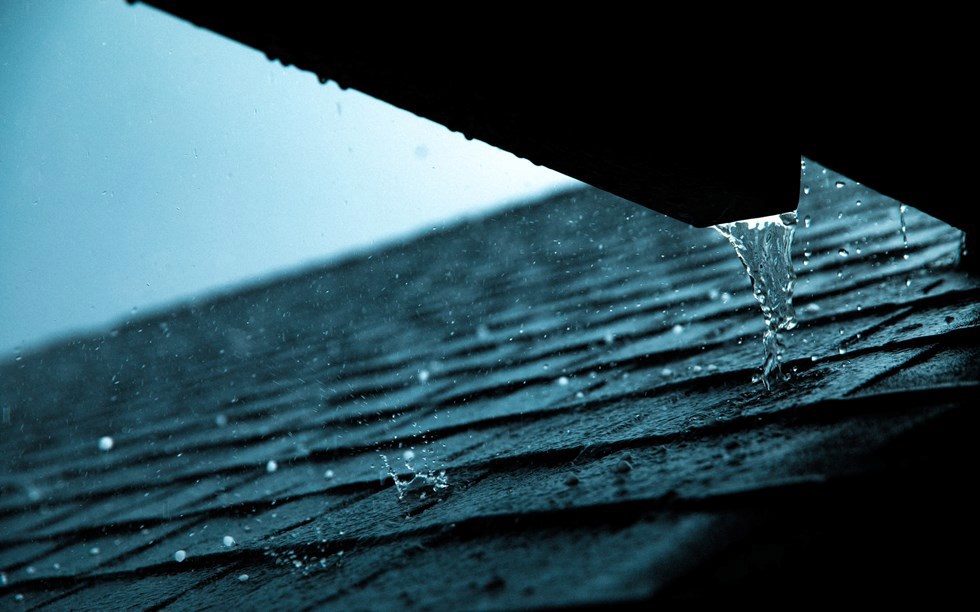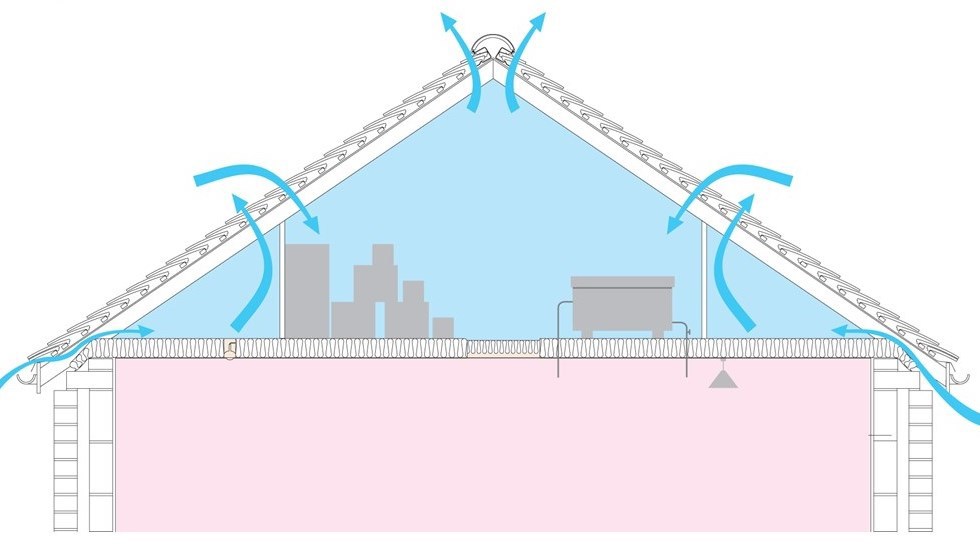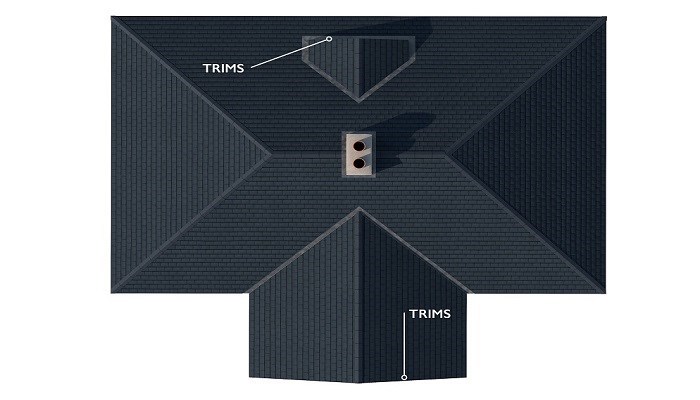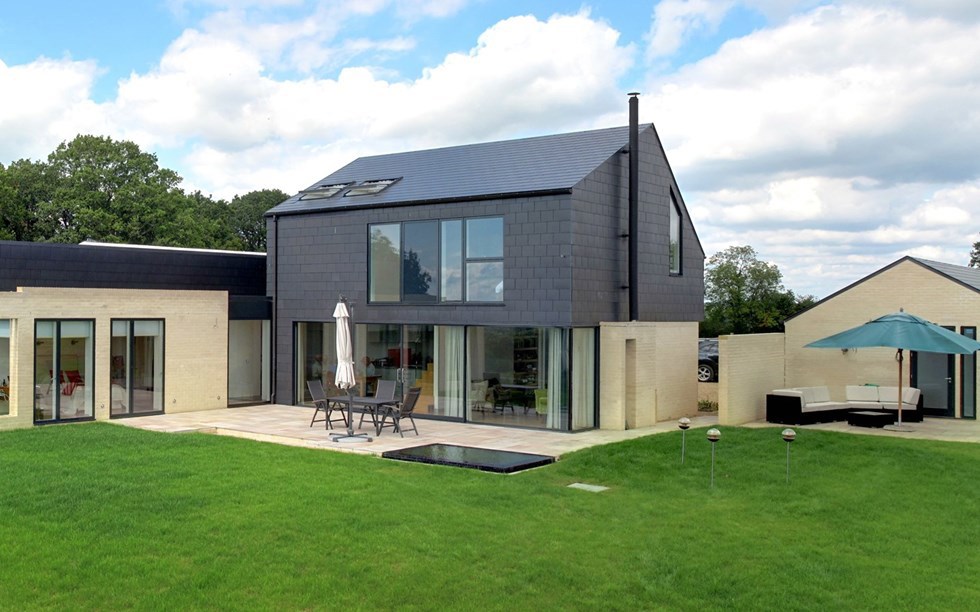The advantages of fibre-cement slates on a pitched roof
A roof protects your home from precipitation. Pitched roofs are particularly efficient for wet climates, especially if you cover them with long-lasting fibre-cement slates. They don’t only keep the rain and snow out, they also offer numerous design possibilities.

Your roof follows your climate
Ever wondered why roofs are different in different countries around the world? Houses, and their roofs, are primarily protecting their inhabitants from the weather conditions. So, needless to say that roofs in snowy areas will be very different from buildings in hot countries. In moderate European climates, roofs need to withstand rain. Lots of it. Germany for instance has 120 rainy days on average, whereas Spain only has 50. The roofs of houses in rainy areas have to resist and evacuate the rain. Therefore, sloping roofs (pitched roofs) are a popular solution. But besides their high functionality, they can also be designed creatively, so that they also add character to your home.

High functionality of sloped roofs
A pitched roof diverts precipitation from the roof thanks to the slope. The rain and snow simply slide down from your roof. So the greater the slope, the better. Because, if the slope is not steep enough, wind can blow rain or snow into the roof structure and cause damage. You don’t want any moisture to penetrate your building fabric. Sloping roofs provide even more reliable protection against moisture if they have a roof substructure with rear ventilation. This so-called cold roof has a double-shell construction. The roof covering and the underlying insulation level are separated from each other, leaving a ventilation cavity between them. This ventilation evacuates any moisture and creates a pleasant living environment inside the building.
How resistant and secure is your roofing?
The traditional roof covering for pitched roofs was composed of clay roof tiles, but many alternatives exist such as concrete roof tiles, metal sheets or roofing with natural building materials such as grass, straw, reeds, slate or wood. They have their charm, but often don’t resist the test of time, or they pose a fire hazard for your home. Roof slates made of fibre cement, on the contrary, combine the protective properties with a long service life. They sport excellent wind and weather resistance and can withstand storms easily. In addition, fibre cement slates are certified non-flammable according to the European fire protection standards A2-s1, d0, keeping your precious property secure.

A roof shape and design for every taste
There are many types of pitched roofs to give your home some extra character. The most popular shapes are gable roofs (2 slopes), monopitch roofs (1 slope), hipped roofs (4 slopes), mansard roofs (with a dent in the slopes) and tent roofs. The choice is a matter of taste and space or planning requirements. In addition to the shape of the roof, the covering material is also decisive for the look of your home. The range of Cedral roofing slates gives you lots of design options, with its different formats, colours and surfaces. Add to that a big variety of layer patterns and you can suit your roof to every architectural style. Or create special effects, by applying the same slates to your roof and facade.

Conclusion
Pitched roofs are a traditional solution that can be adapted to modern times. Their protective construction is optimally adapted to our moderate, humid climate. You will definitely find something that fits your style among the different roof shapes and cover materials. We recommend Cedral fibre-cement slates for long-lasting style, protection and enjoyment.